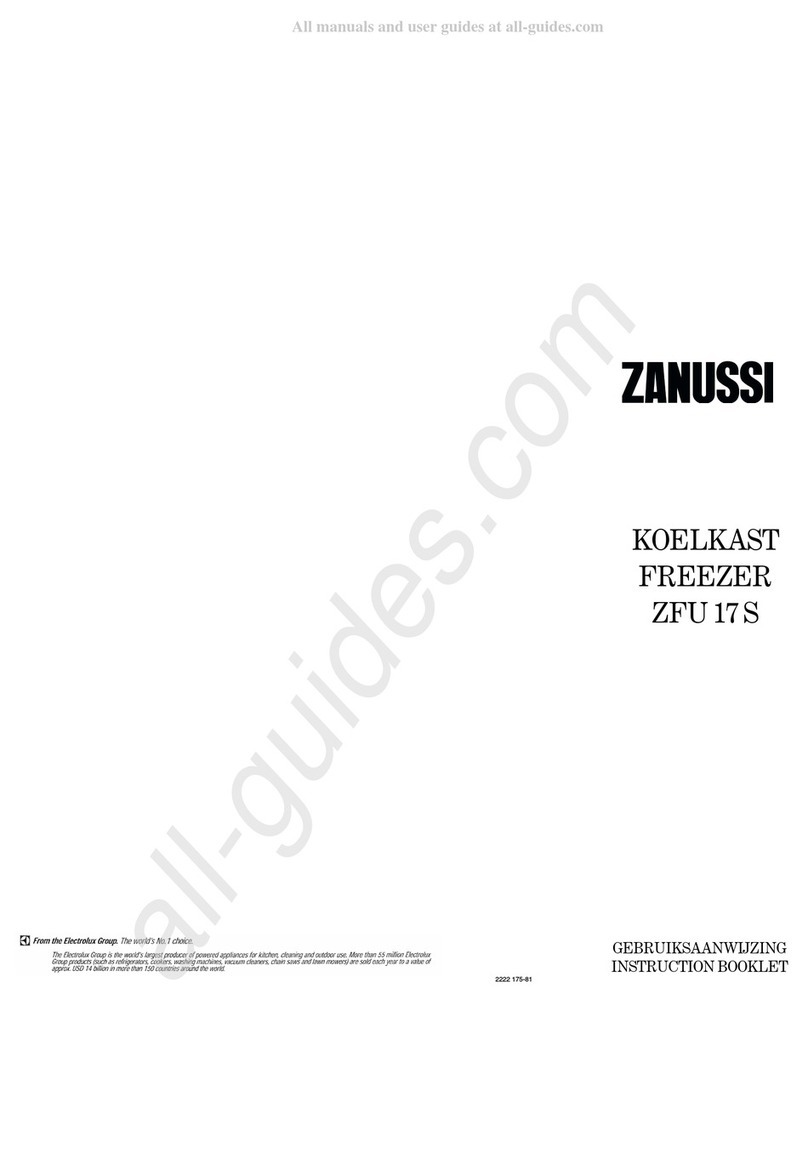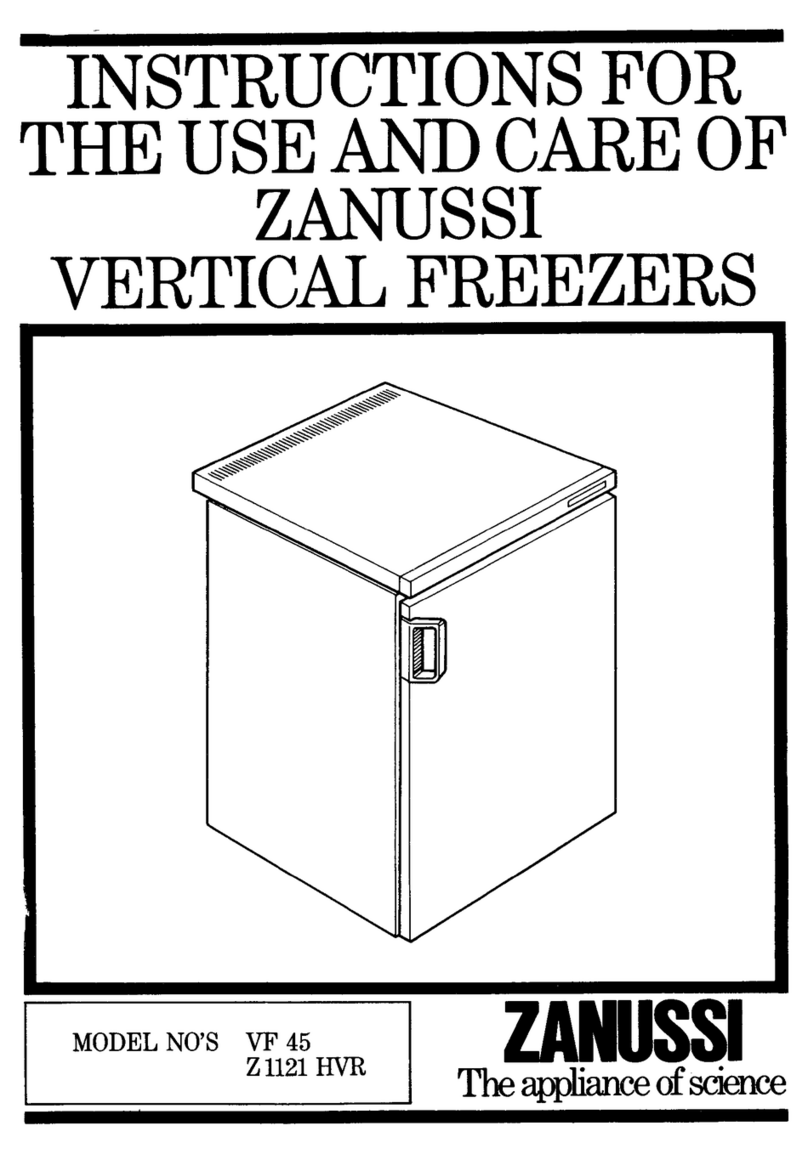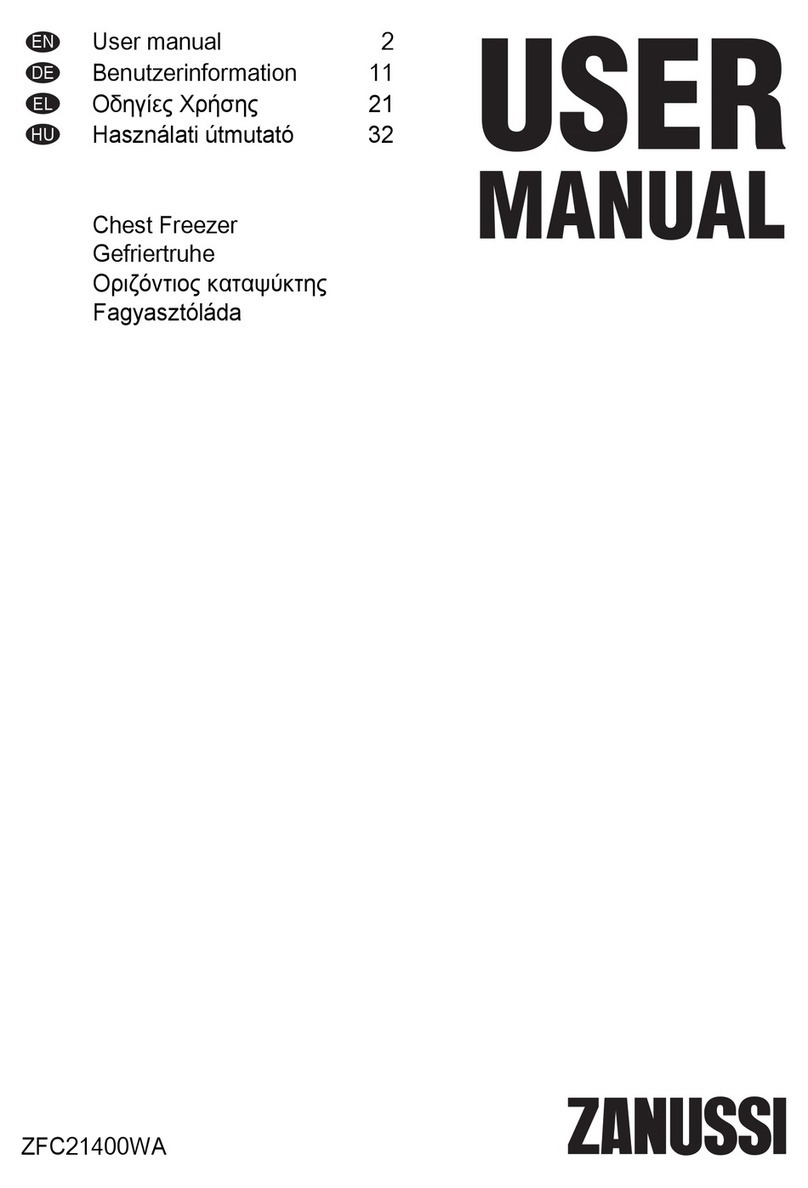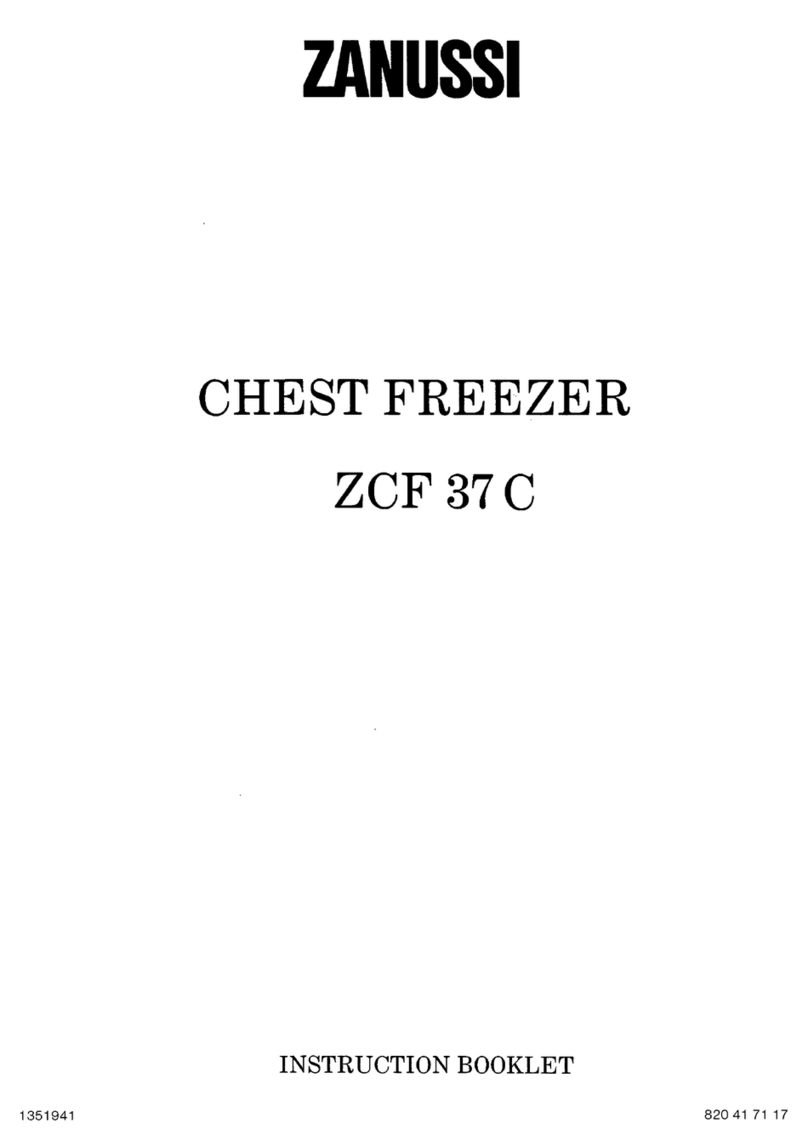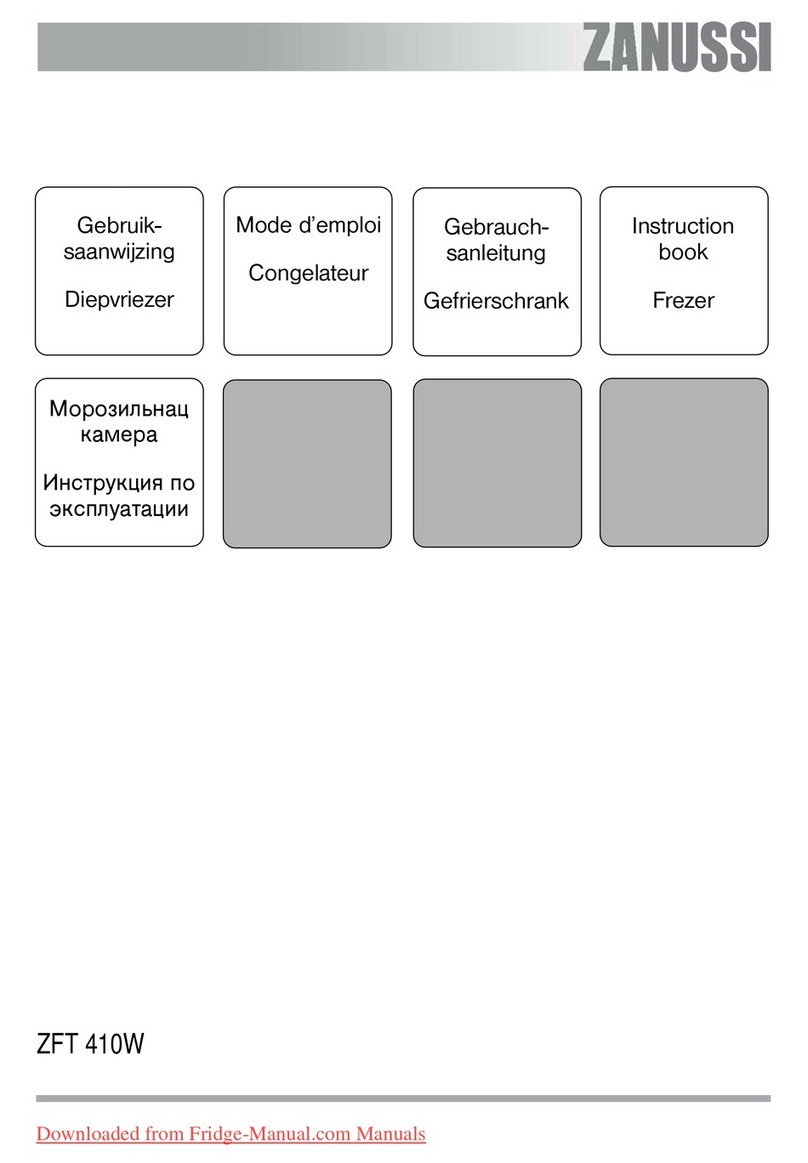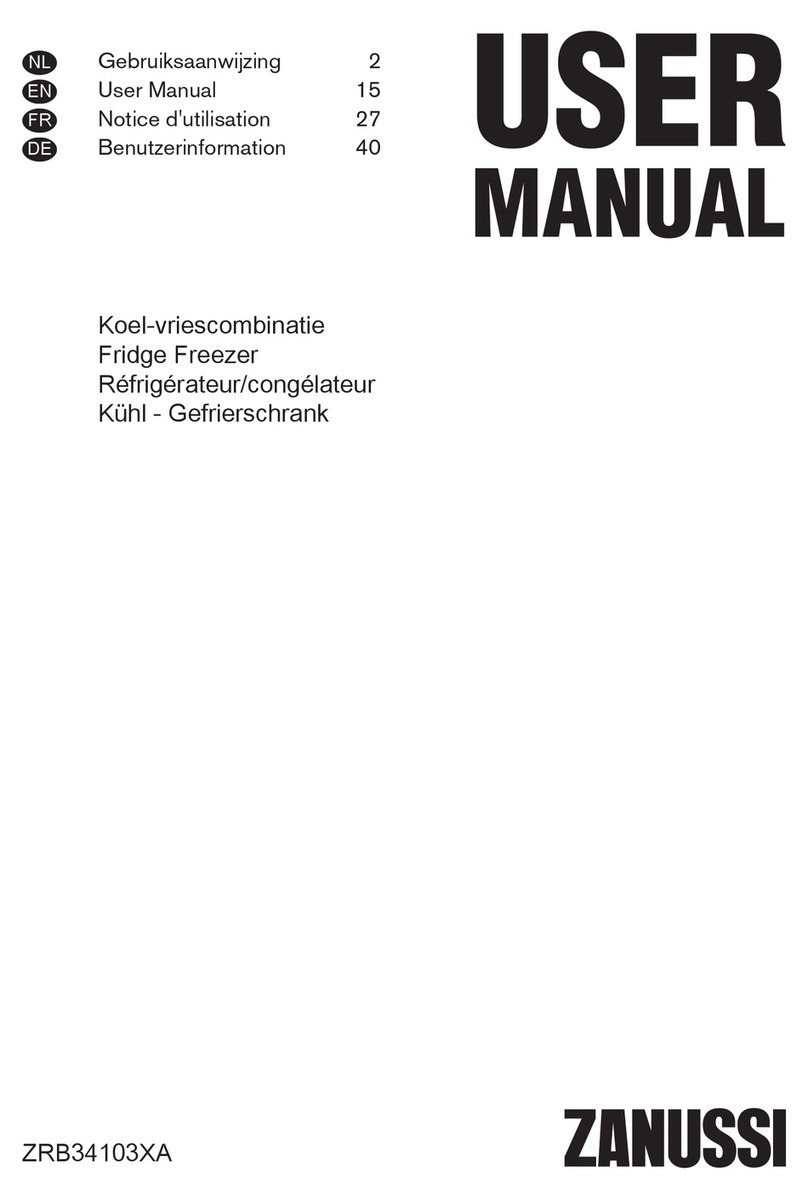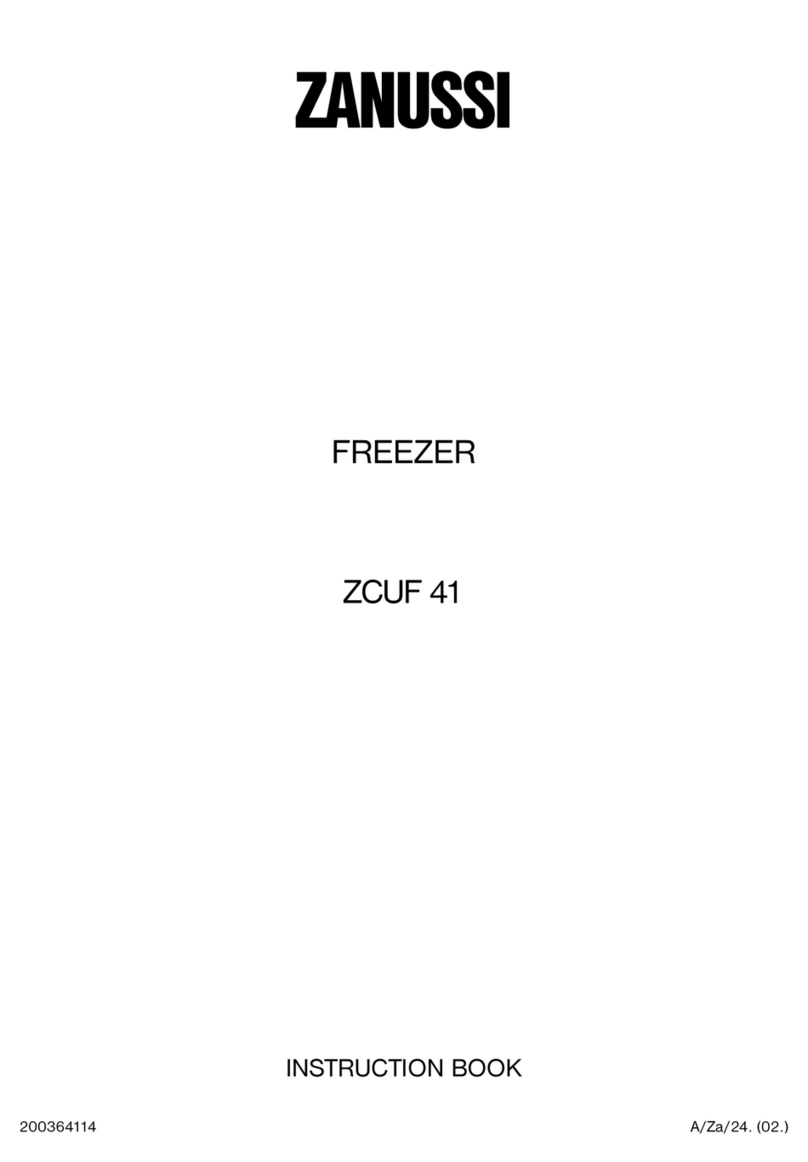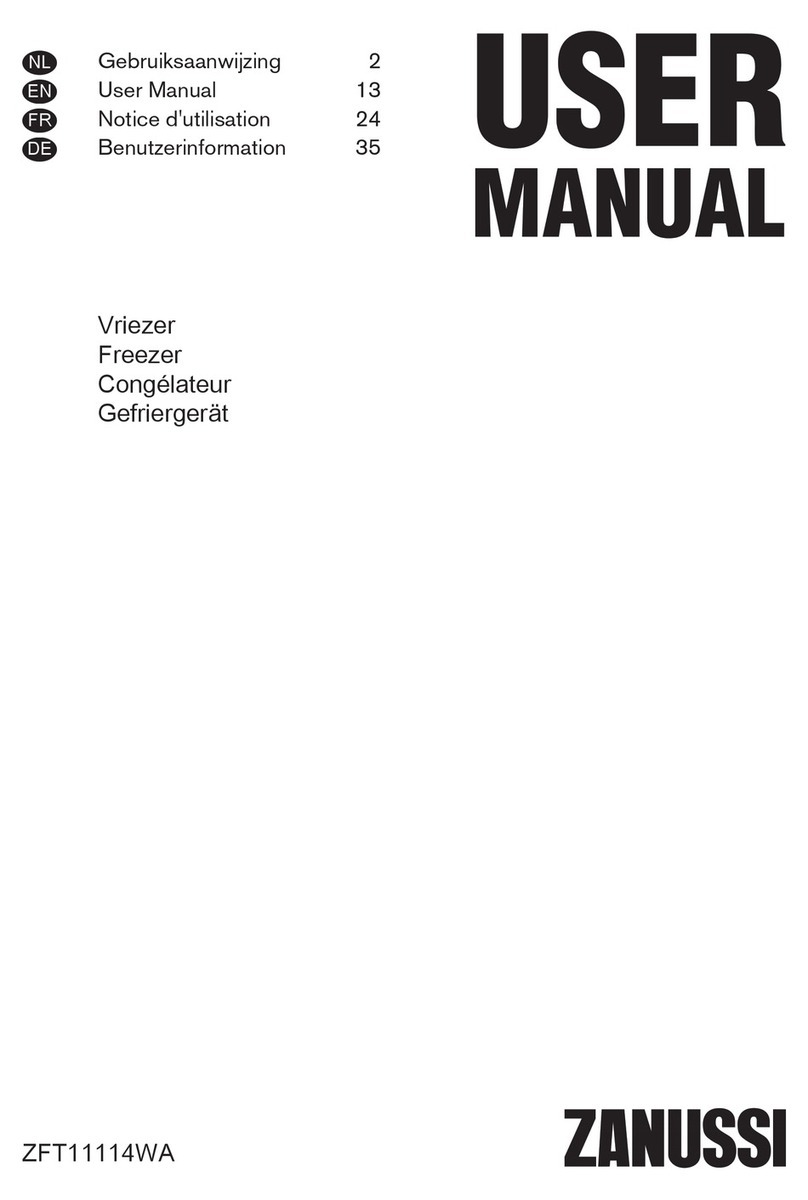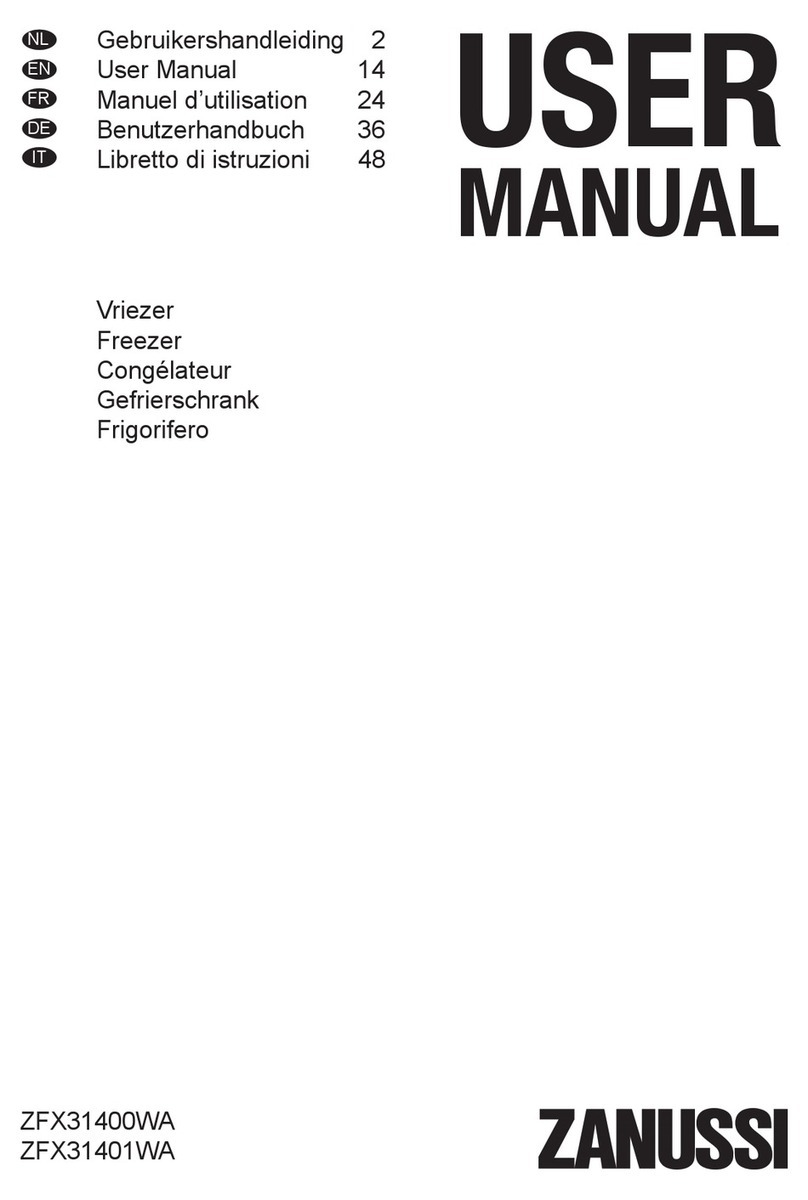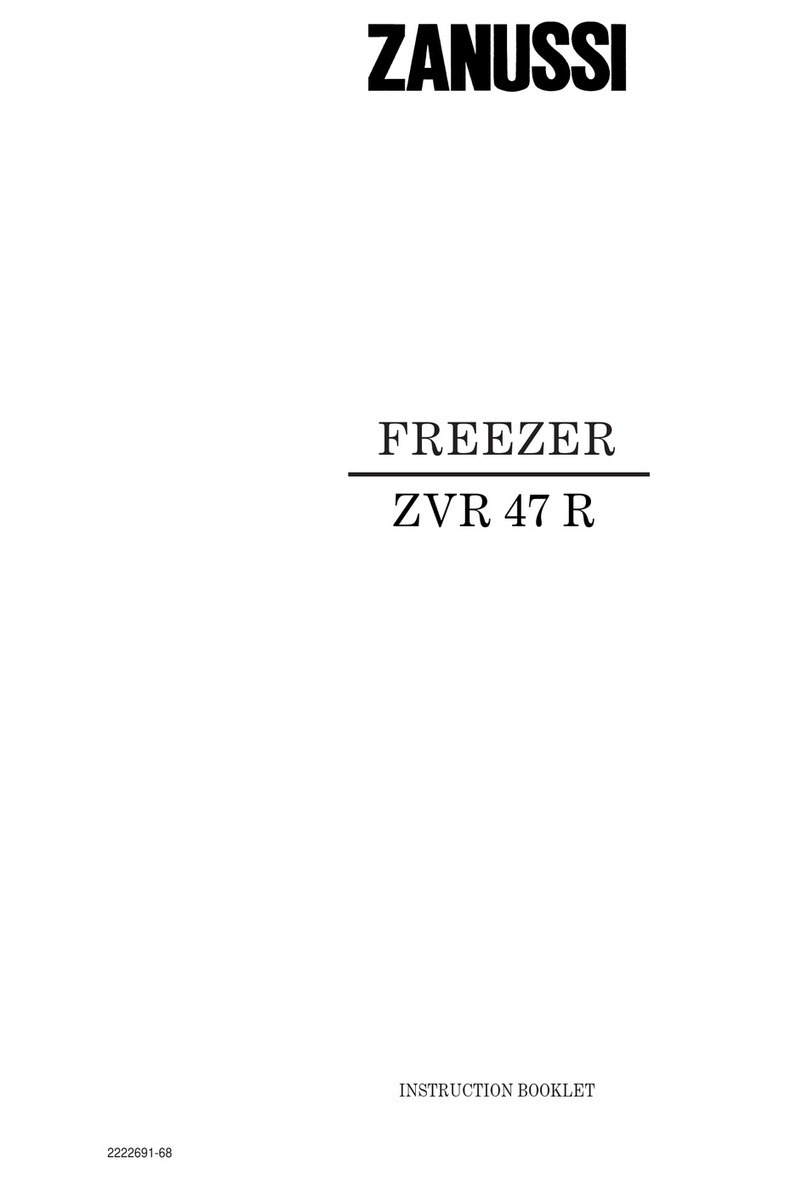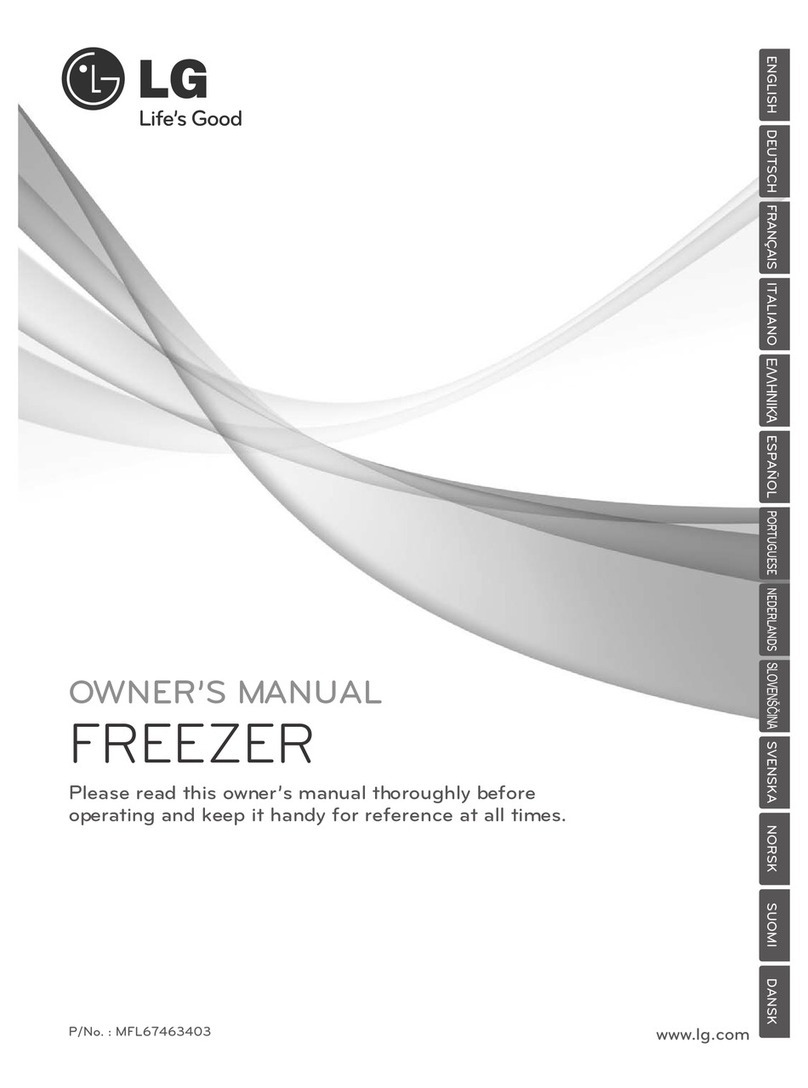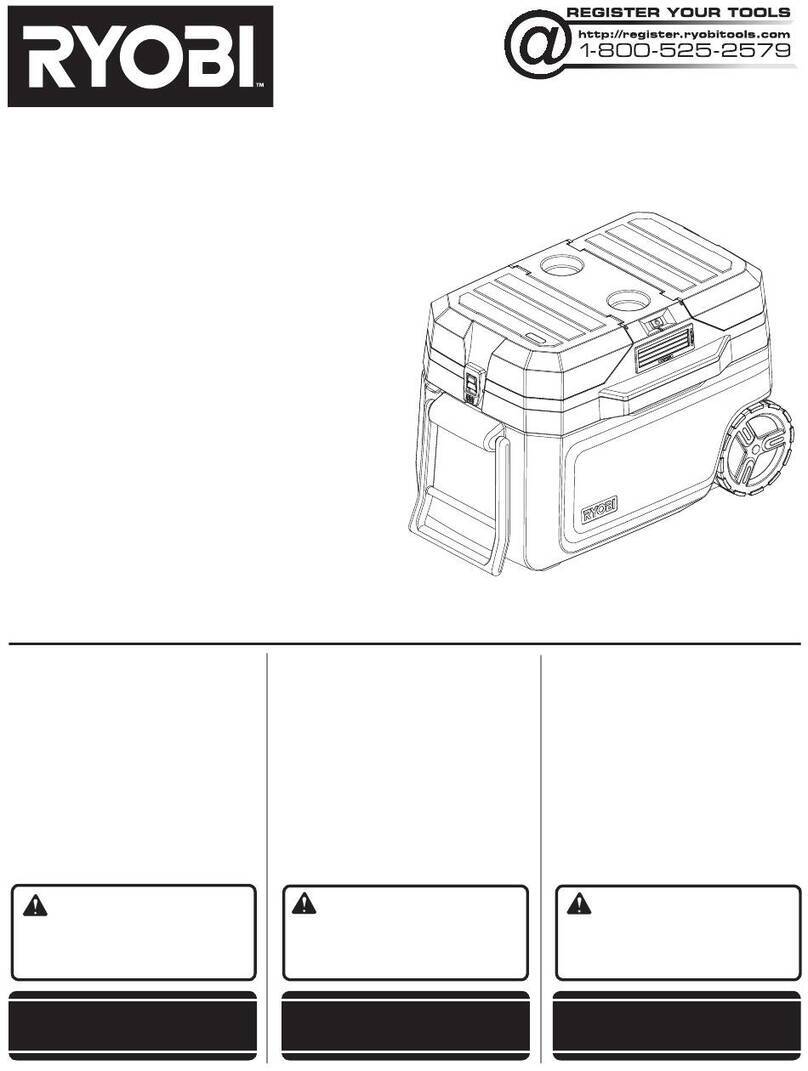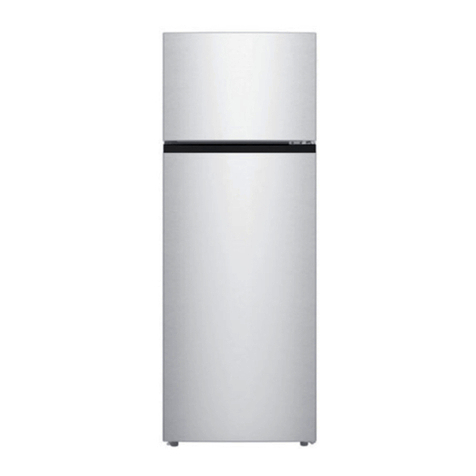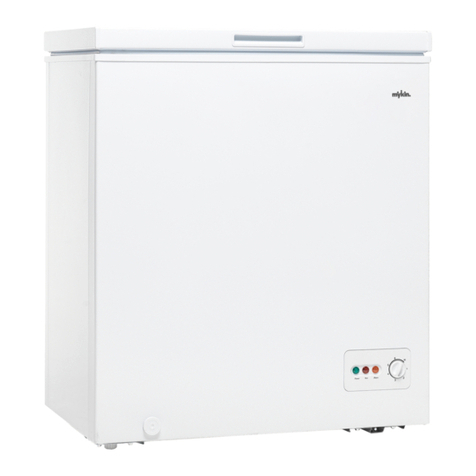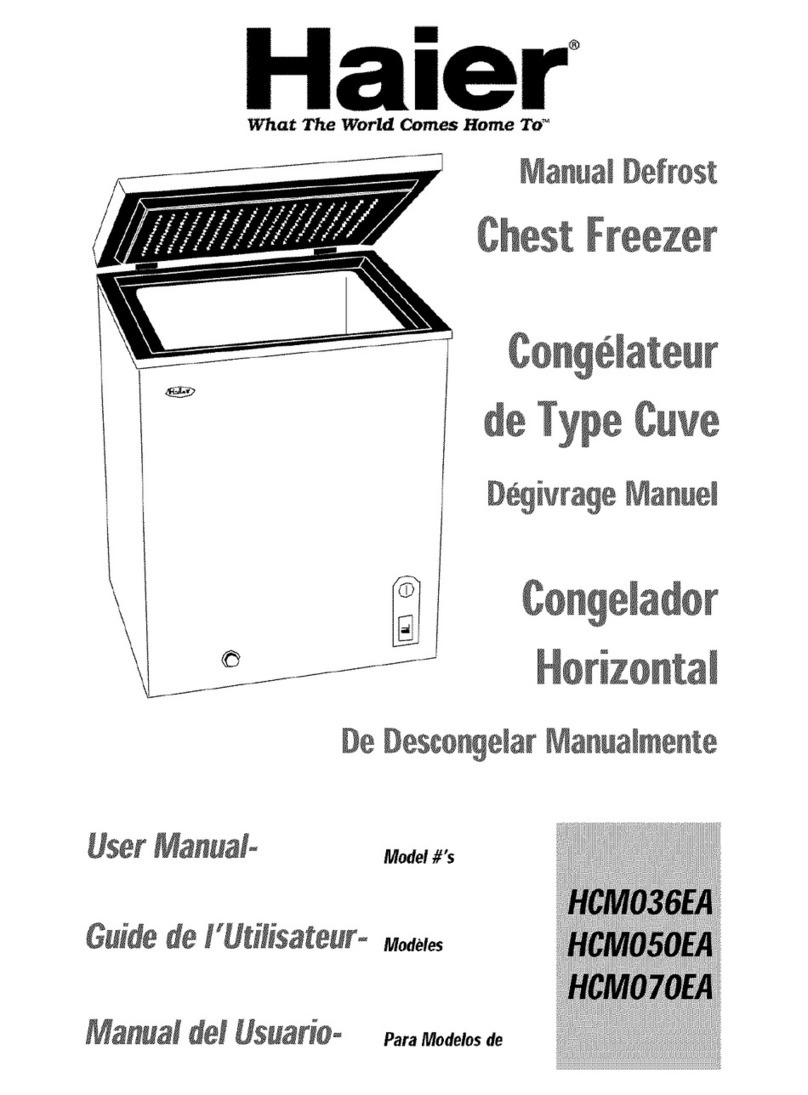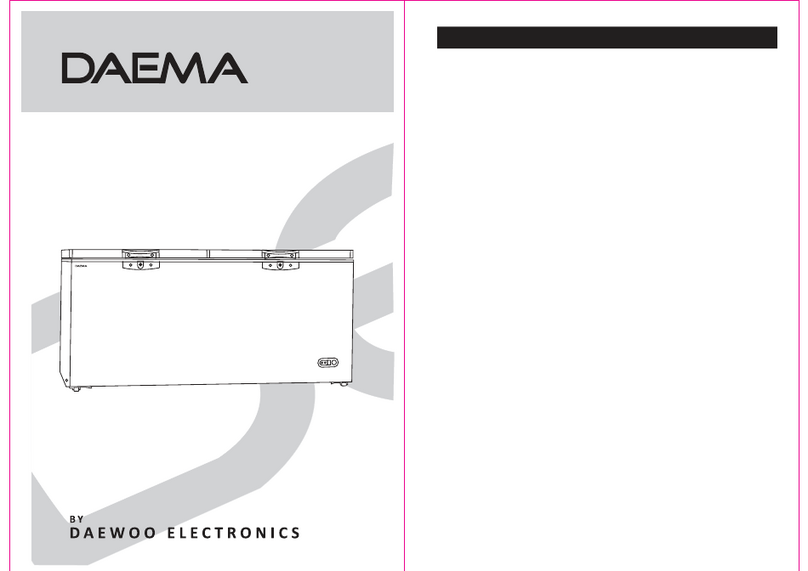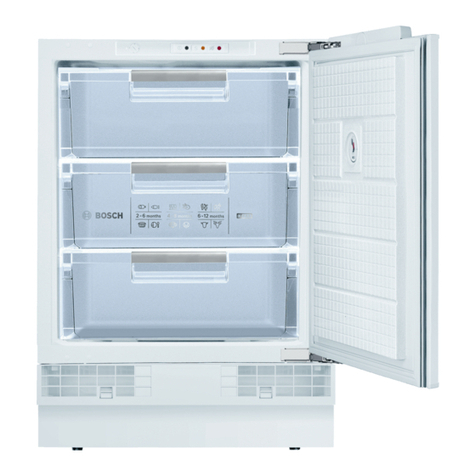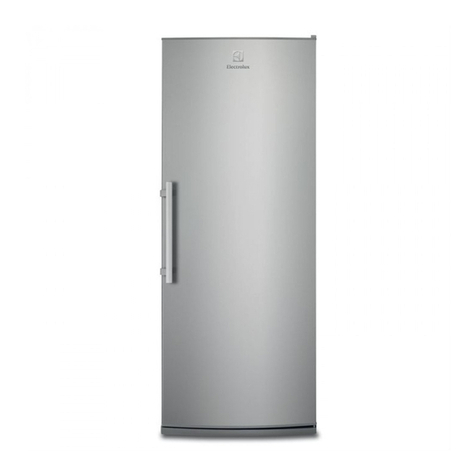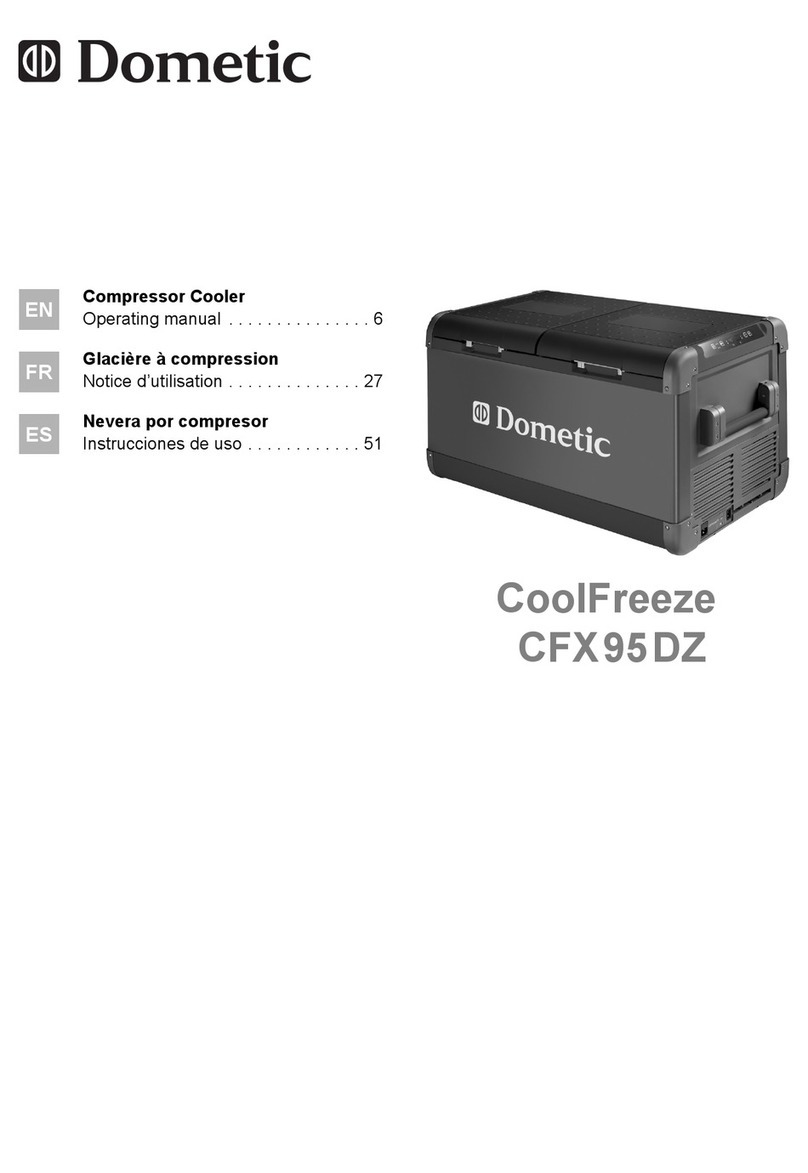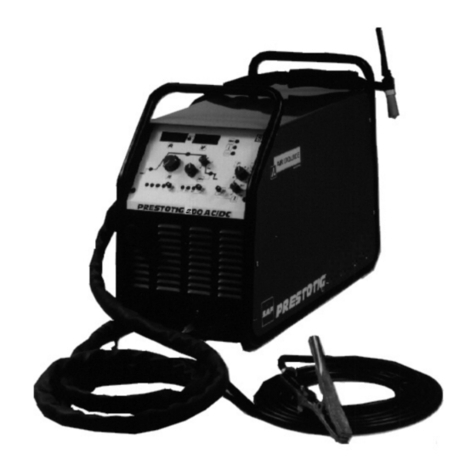16
Im
Impor
port
tant saf
ant safe
et
ty inf
y infor
ormation
mation
General safety precautions
Keep these instructions and they should remain at
the appliance when moving away or changing
owner.
This appliance is designed for storing food,
domestic use and being used according to these
instructions only.
Specialised companies that are qualified to do
so by the manufacturer must carry out service
and repairs including repairing and changing
the power cord. Accessory parts supplied by
them should be used only for repairing. Otherwise
the appliance can be damaged or can cause other
damage or injury.
The appliance is out of circuit only in that case if the
plug is removed from the socket. Before cleaning
and maintenance always unplug it (do not get it by
the cable). If the socket is difficult to reach, switch
off the appliance by cutting off the current.
Power cord must not be lengthened.
When cleaning, defrosting, taking out frozen food
or ice tray do not use sharp, pointed or hard
devices, as they can cause damage to the
appliance.
Be careful not to allow liquids to the temperature
control.
Ice and ice-cream can cause hurt if they are eaten
immediately after removal from the frozen food
compartment.
After dissolving frozen food must not be refrozen, it
must be used up as soon as possible.
Store pre-packed frozen food in accordance with
the frozen food manufacturer's instructions.
You must not make defrosting faster with any
electric heating appliance or chemicals.
Do not put hot pot to the plastic parts of the freezer.
Do not store flammable gas and liquid in the
appliance, because they may explode.
Do not store carbonated drinks, bottled drinks and
bottled fruits in the freezer.
Precautions for child safety
Do not allow children to play with the packaging
of the appliance. Plastic foil can cause
suffocation.
Adults must handle the appliance. Do not allow
children to play with it or its controlling parts.
If you are discarding the appliance pull the plug
out of the socket, cut the connection cable (as
close to the appliance as you can) and remove
the door to prevent playing children to suffer
electric shock or to close themselves into it.
Safety precautions for
installation
Put the appliance to the wall to avoid touching or
catching warm parts (compressor, condenser)
to prevent possible burn.
When moving the appliance take care of the plug
not to be in the socket.
When placing the appliance take care not to
stand it on the power cord.
Adequate air circulation should be around the
appliance, lacking this leads to overheating. To
achieve sufficient ventilation follow the
instructions relevant to installation.
If the appliance is not placed on floor level,
provide appropriate fixing (e. g. using sucking
disks).
For the safety of life and property keep
the precautions of these user's
instructions as the manufacturer is not
responsible for damages caused by omission.
GB




